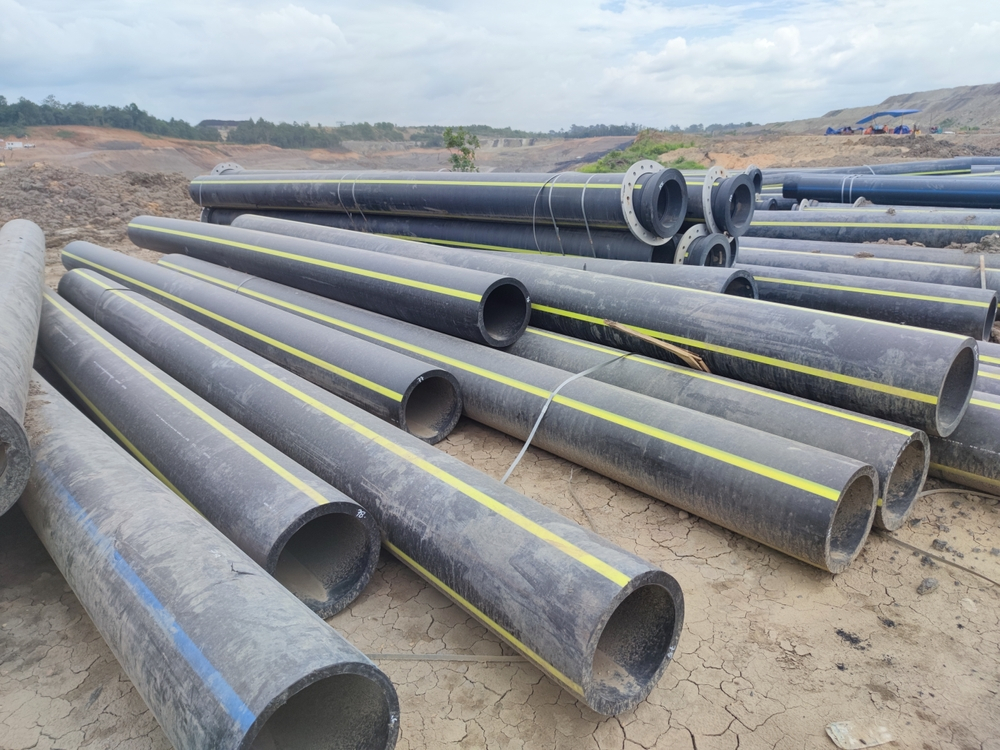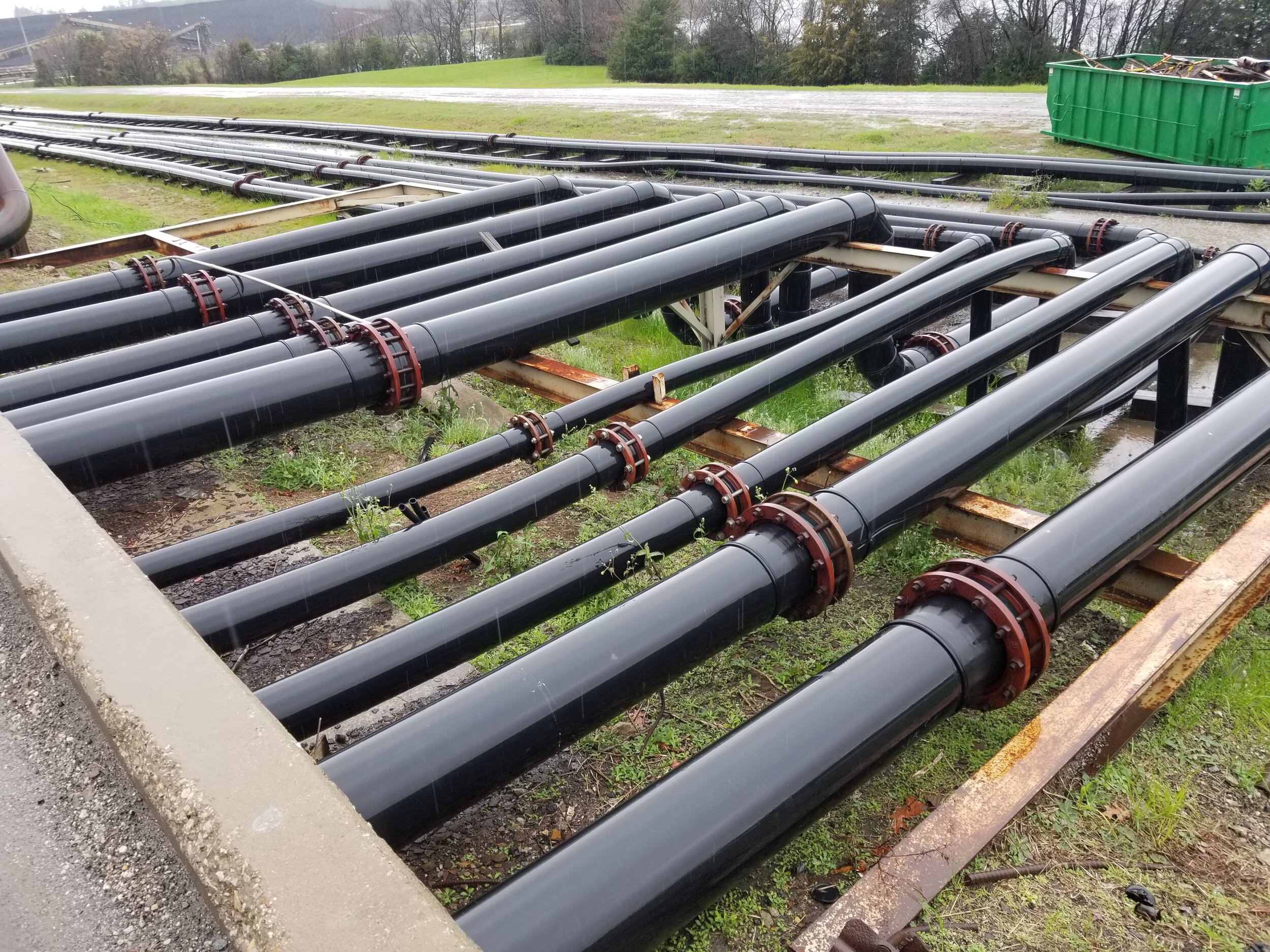Why Texas hdpe pipe manufacturer Is Leading in Modern Infrastructure
Wiki Article
The Essential Actions for Successful Installation of HDPE Pipeline in Your Next Task
Effective installation of HDPE pipeline needs careful preparation and implementation. Key steps consist of examining project needs, preparing the site, and picking appropriate signing up with methods. Each phase plays a critical function in making sure the integrity and efficiency of the pipeline. Recognizing these vital actions can substantially influence the total success of the project - American Plastics HDPE Pipe for Oilfield. Nonetheless, the nuances of each action might hold the secret to getting rid of usual obstacles encountered during setupRecognizing the Advantages of HDPE Pipe
High-density polyethylene (HDPE) pipe provides countless advantages that make it a preferred selection for various applications. Its high resistance to corrosion and chemicals warranties toughness popular environments, greatly prolonging the life-span of setups. Furthermore, HDPE's flexibility enables much easier installation, particularly in tough terrains, as it can bend without damaging. The lightweight nature of HDPE pipe streamlines transport and handling, decreasing labor prices during setup.HDPE pipe is known for its low friction coefficient, which improves fluid circulation and decreases energy usage. Its seamless construction minimizes the risk of leaks, contributing to far better source monitoring and environmental management. Furthermore, HDPE is recyclable, aligning with sustainable techniques and decreasing ecological effect. Overall, the combination of strength, flexibility, and eco-friendliness makes HDPE pipe an exceptional selection for a variety of jobs, from water circulation to commercial applications.
Planning Your HDPE Pipe Installment
When preparing a setup of HDPE pipeline, mindful factor to consider of several vital aspects is crucial to safeguard a successful task. First, job managers must analyze the particular requirements of the pipe, consisting of the meant use, flow rates, and ecological conditions. Recognizing these parameters will certainly lead the choice of appropriate pipe dimensions and product quality.Next, timelines need to be developed, factoring in procurement timetables and any potential hold-ups. Control with local authorities for permits and regulative conformity is likewise necessary. Furthermore, a detailed spending plan ought to be prepared, encompassing all prices connected with materials, labor, and machinery.
Last but not least, it is essential to engage a qualified team experienced in HDPE pipe setup. Their proficiency will aid alleviate threats, warranty adherence to market criteria, and inevitably contribute to the task's success. Extensive preparation lays the foundation for a smooth installation procedure and durable performance of the HDPE piping system.
Preparing the Site for Installation
Correct website preparation is important for the effective setup of HDPE pipe. Before installation starts, the website must be thoroughly evaluated to assure it satisfies all necessary requirements. This includes surveying the ground for existing structures, energies, and possible dangers that could hamper the installation process.

Appropriate elevation and positioning ought to be developed to maintain a consistent gradient for drainage objectives. Proper water drainage around the installment website is additionally necessary to stop water build-up, which can bring about difficulties down the line.
Techniques for Signing Up With HDPE Water Lines
Attaining a trustworthy link between HDPE pipes is important for guaranteeing the honesty and long life of the installment. Various methods exist for joining these pipelines, each suited for various job needs. Blend welding is one of one of the most usual approaches, using warmth to bond the pipeline finishes together, creating a seamless and sturdy link. This technique can be more classified into socket combination and butt combination, depending on the pipe arrangements.Mechanical installations are another option, using clamps and threaded connectors to join areas of HDPE pipeline. While generally faster to set up, they may need extra upkeep gradually. Electrofusion is a customized technique that involves utilizing electric existing to warmth and fuse the pipes with specifically designed installations, making certain a solid bond. Picking the proper joining strategy is important, as it directly affects the overall efficiency and reliability of the HDPE piping system in the designated application.
Testing and Inspection of Installed Pipeline
The testing and examination of installed HDPE pipes are essential to ensuring their performance and long life. This process includes visual inspection techniques, stress testing techniques, and leak detection treatments to determine possible concerns. By using these approaches, experts can confirm the stability of the installation before it is taken into use.Aesthetic Inspection Techniques
Using effective aesthetic assessment methods is essential for assuring the integrity of mounted HDPE pipes. Assessors must systematically examine all visible sections of the pipe to recognize any type of indicators of damage, misalignment, or inappropriate installment. Secret indicators to analyze consist of joint honesty, surface area irregularities, and connections. Examiners may make use of tools such as amplifying glasses or video cameras to enhance presence and detail. It is important American Plastics HDPE Pipe Manufacturing to examine for indications of environmental tension, such as distorting or extreme bending, which could compromise efficiency. Regular paperwork of searchings for enables tracking adjustments with time and helps overview needed fixings. By sticking to well-known visual assessment procedures, job teams can significantly minimize the threat of future failings and guarantee lasting dependability of the piping system.Pressure Evaluating Methods
Visual examination acts as a preliminary procedure, yet it is not adequate by itself to ensure the efficiency of set up HDPE pipes. Pressure testing methods are essential for ensuring the honesty of these systems. Commonly, hydrostatic testing is utilized, where the pipes are loaded with water and based on stress degrees over the designated operating pressure. This method assists identify weak points or potential leakages. Pneumatically-driven testing can additionally be made use of, although it carries greater threats as a result of the compressibility of air. Despite the method picked, sticking to sector criteria and security methods is crucial. After performing pressure tests, complete paperwork is required to confirm the results and confirm that the setup meets all functional needs prior to continuing to the following phase of the job.
Drip Detection Procedures
Just how can one assure that mounted HDPE pipelines are cost-free from leaks? Effective leak discovery procedures are crucial to protect the integrity of the system. At first, visual assessments need to be performed, seeking indications of water accumulation or soil erosion around pipeline joints. Following this, pressure testing can confirm the system's strength. An usual technique is the hydrostatic test, where water is introduced under pressure, keeping track of for decreases that indicate prospective leaks. In addition, advanced technologies, such as acoustic sensors or infrared thermography, can find leakages that may not be visible. Routine tracking and maintenance further add to the longevity of HDPE pipelines, ensuring they remain leak-free throughout their operational life-span. Appropriate documentation of these procedures is important for conformity and future recommendation.Upkeep Tips for Long-Term Performance
To guarantee the long life of HDPE pipes, developing a normal inspection timetable is crucial. This aggressive approach permits the very early detection of potential problems, minimizing costly repair work. Additionally, carrying out proper cleaning methods will help maintain peak efficiency and avoid build-up that can influence capability.Normal Inspection Schedule
HDPE pipes are known for their durability and resistance to deterioration, establishing a normal evaluation timetable is important for ensuring their long-lasting efficiency. Regular evaluations help determine prospective problems such as leaks, joint integrity, and ecological effects that may impact the pipeline's functionality. It is recommended that assessments take place a minimum of biannually, or much more regularly in settings with extreme conditions. custom hdpe pipe manufacturing Midland TX. Throughout these analyses, aesthetic checks must be conducted to spot indications of wear or damage. In addition, making use of modern technology such as ultrasonic testing can give additional insights right into the pipeline's condition. By carrying out an organized inspection schedule, job supervisors can proactively deal with issues, thus extending the life-span of HDPE pipelines and maintaining system performanceAppropriate Cleansing Techniques
Proper cleaning strategies play a necessary function in keeping the lasting efficiency of HDPE pipelines. Regular cleansing stops the build-up of particles, debris, and biofilm, which can cause obstructions and minimized circulation efficiency. Operators needs to utilize methods such as high-pressure water jetting or foam cleansing to efficiently eliminate contaminants without damaging the pipeline surface. It is essential to prevent utilizing extreme chemicals that may deteriorate HDPE product. Furthermore, set up upkeep checks should include aesthetic assessments for any signs of wear or damage. Appropriately educated workers need to perform these cleaning processes, guaranteeing conformity with safety and environmental guidelines. By applying these methods, the lifespan of HDPE pipes can be substantially expanded, guaranteeing suitable efficiency throughout their operational life.Regularly Asked Concerns
What Are the Ecological Influences of HDPE Pipeline Manufacturing?
The ecological impacts of HDPE pipeline manufacturing consist of greenhouse gas exhausts, energy intake throughout production, potential plastic air pollution, and difficulties in reusing. HDPE's long life and resistance to deterioration can mitigate some environmental issues.How Does HDPE Pipeline Contrast to Various Other Materials?

What Tools Are Needed for HDPE Pipeline Installation?
Essential devices for HDPE pipe setup include a combination equipment, pipeline cutters, shovels, measuring tape, and safety gear. Proper tools assurances effective, safe handling and setup, adding to the task's overall success and stability.Are There Any Details Regulations for HDPE Pipe Installment?
Certain policies for HDPE pipe setup differ by region, frequently governed by local, state, or government codes. Conformity with these laws warranties security, ecological protection, and functionality, making adherence essential for successful project outcomes.Can HDPE Water Lines Be Recycled After Use?
Yes, HDPE pipes can be reused after usage. Their polycarbonate nature enables reprocessing, making them suitable for recycling right into brand-new products. This sustainability element contributes to ecological preservation and promotes round economic climate methods in building and construction.Report this wiki page